Asus Zenbook Pro 14 OLED review: innocuous but impressive
The Zenbook Pro 14 OLED is a portable laptop, designer’s workstation and gaming PC, all crammed into an innocuous package – that we think is superb
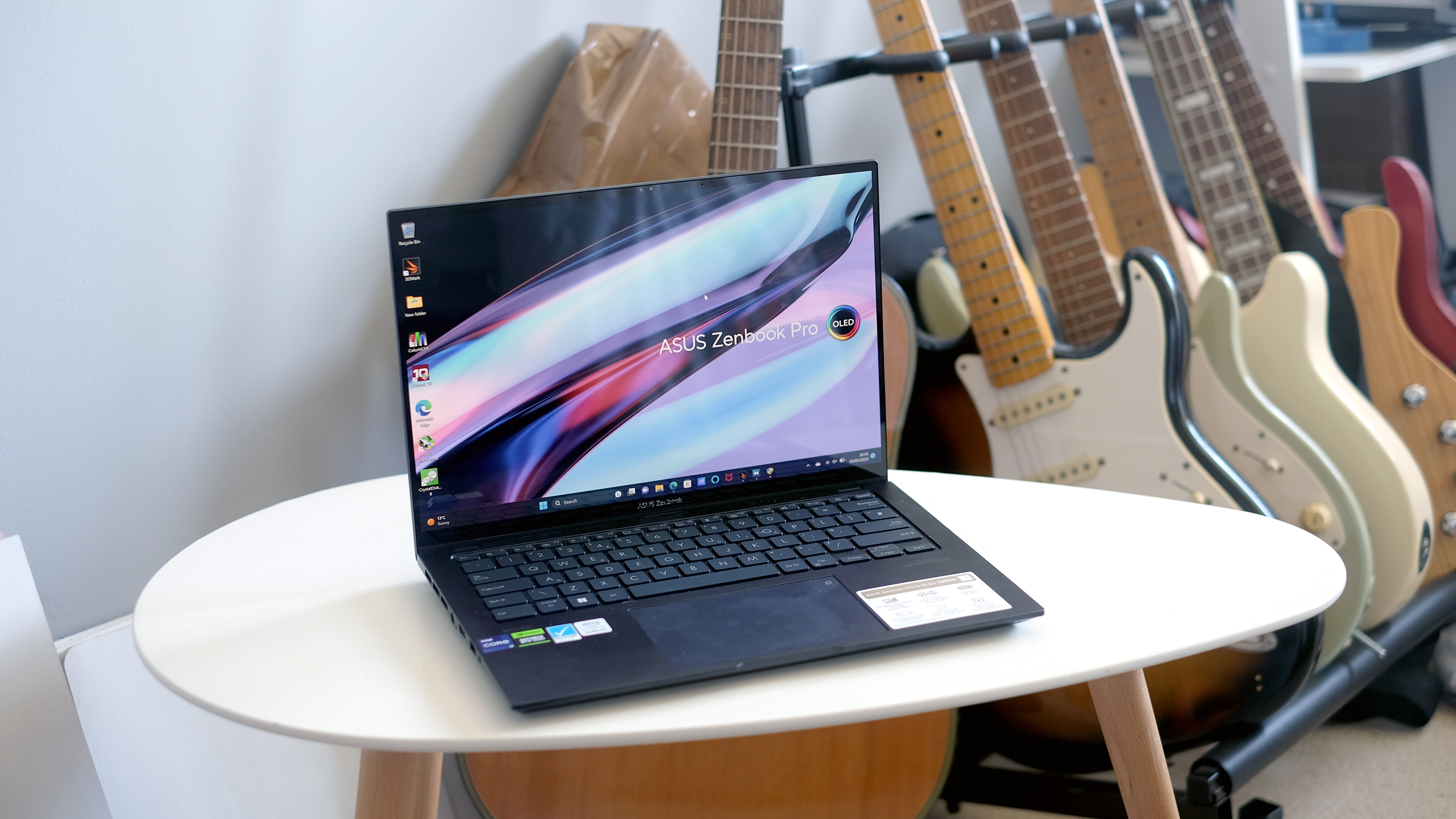
The Asus Zenbook Pro 14 OLED is more dynamic than you might assume following a quick glance at its exterior. More than just a laptop only just slim and light enough to be considered for all-day portable use, the Zenbook Pro 14 OLED is an extremely powerful PC with handy features for creative types. What makes the Asus Zenbook Pro 10 OLED a bit special, though, is that it comes with good speakers, a substantial keyboard, and top-quality trackpad in addition to that power. Yes, it costs a lot, but it delivers a lot too.
-
+
Rich OLED screen
-
+
Quality keyboard and touchpad
-
+
Great performance for its size
-
+
Full-sounding speakers
-
-
Design may seem drab
-
-
Higher-pitch fan noise is distracting
Why you can trust T3

Laptops usually have an angle. Maybe they’re made to be the best gaming laptops. Maybe they’re designed to be the best ultra-light laptops. Perhaps they want to appeal to students above all else. Well, Asus couldn’t pick just one role for the Zenbook Pro 14 OLED.
You could say this Zenbook is a portable gaming powerhouse, a bit like the Asus Zephyrus G14. But this one has an additional creative’s angle, cramming in a touchscreen with stylus support and an unusual virtual rotary controller built into the touchpad.
It isn’t one of the best cheap laptops, mind, but that's probably a given. And if you’re not enticed by how many pies it can jam its fingers into, you can get something lighter or more powerful.
Still, I’m impressed by the Zenbook Pro 14 OLED's performance and abilities that Asus has squeezed into something that can be just about used as a laptop you carry around with you each day.
Asus Zenbook Pro 14 OLED: Price & Availability
Asus sent me the Asus Zenbook Pro 14 OLED early enough that it is not widely available in the UK at the time of review. However, I have been told this model will go on sale for £2099 when it does. This UX6404 model was announced at CES 2023, back in January. A lower-spec version is also available in the US for $1799.
Asus Zenbook Pro 14 OLED review: Design
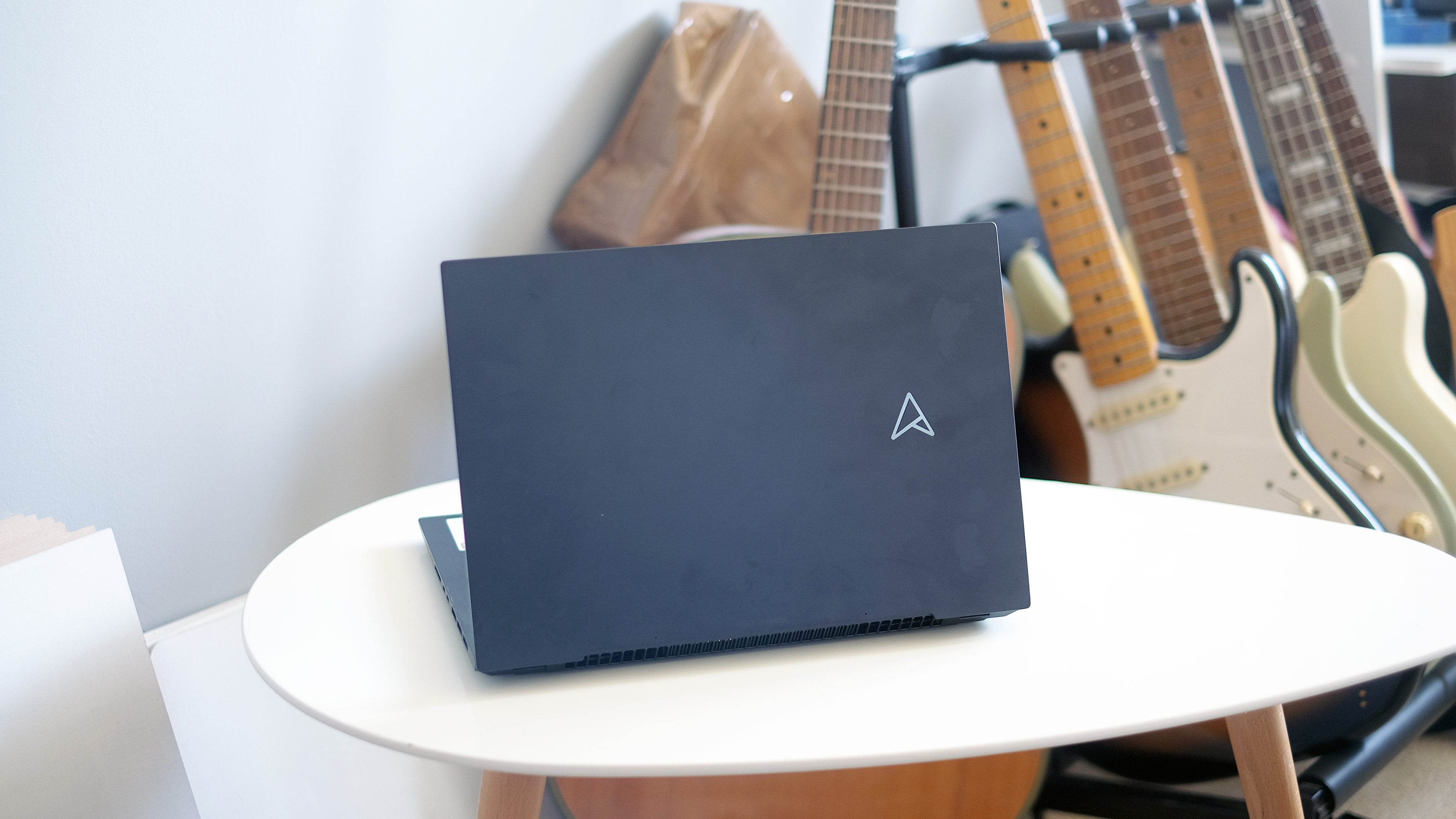
I’ve bigged-up the Asus Zenbook Pro 14 OLED pretty hard already, but it is nowhere near as light as some 14-inch laptops. It weighs 1.6kg and is 17.8mm thick. That is around 300g heavier than the average portable 14-incher.
However, it is very similar in weight to the MacBook Pro 14. And do people use that as an ultra-portable? Hell yeah they do! That’s how I’ve been treating the Asus Zenbook Pro 14 OLED for the past few weeks, more or less.
This is a well-made metal laptop, and one without the potentially embarrassing “gamer’ visual flourishes you get in the ROG Zephyrus line. If anything, the design is a bit straight-laced, with a severe casing contour for the keyboard tray and an otherwise sober look.
The build style of the Asus Zenbook Pro 14 OLED is traditional too. Some laptops made to suit designer types have odd hinges that let you angle the display like a drafting tablet, such as the Microsoft Surface Laptop and Acer ConceptD series. But this Asus has a classic laptop hinge, and it only opens the standard laptop amount, not to 180 degrees or 360 degrees.
The Asus Zenbook Pro 14 OLED is pretty low-key, and it’s up to you to decide whether that’s a positive or not.
Asus Zenbook Pro 14 OLED review: Display
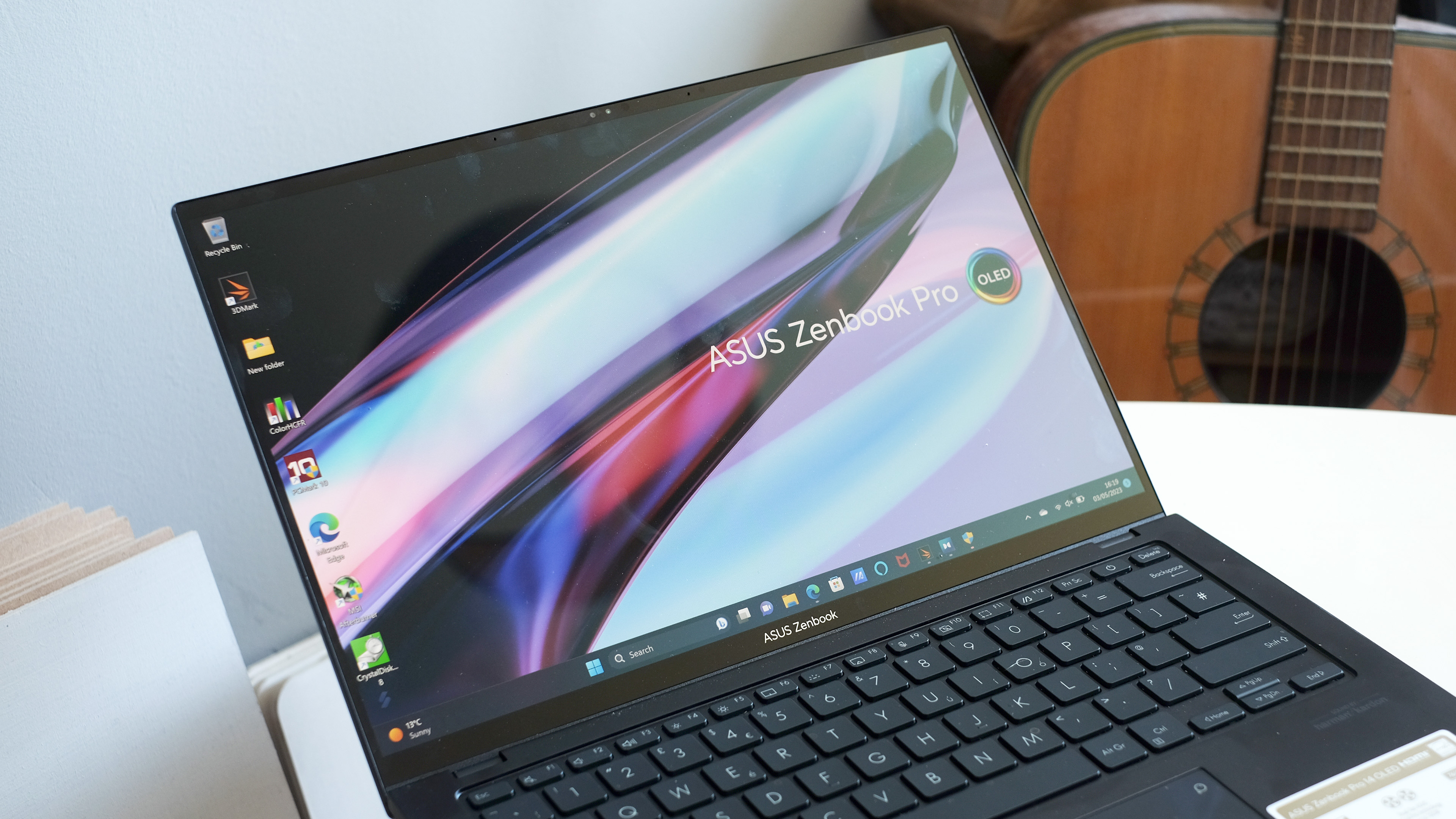
Either way, the Asus Zenbook Pro 14 OLED has one of the most advanced displays you’ll find in a Windows laptop today. It has a bunch of techy boxes ticked. Namely: it’s an OLED, its colour depth is fantastic, the 1800p resolution looks sharp, and the max refresh rate is double the norm at 120Hz.
The one annoyance is the Asus Zenbook Pro 14 OLED screen can’t get anywhere near its true peak brightness unless you feed it HDR content. Even in direct sunlight the screen will only give you about two-thirds of its true power, which is a shame when the display finish is glossy glass, and therefore affected by reflections. It gets by outdoors, but not in carefree style.
As seen in all current OLED laptops (that we’ve tried anyway) the Asus Zenbook Pro 14 OLED can’t match the top MacBooks’ miniLED displays for brightness. This Asus peaks at around 600 nits, compared to 1600 nits in a MacBook. Once again, you’ll only see this with HDR content, but the normal brightness of a MacBook is higher too.
Despite not having a fancy hybrid-style hinge, the Asus Zenbook Pro 14 OLED does use a touchscreen. And it has a digitiser baked in, as you can use a stylus. One comes in the box, or at least it did with ours – check before hitting the checkout 'buy' button.
This is a proper pressure-sensing pen, not just a basic capacitive stylus. It’s one of the key “tells” Asus has made this as a laptop for design pros and serious hobbyists, not just those after a powerful laptop.
Asus Zenbook Pro 14 OLED review: Touchpad & Keypad
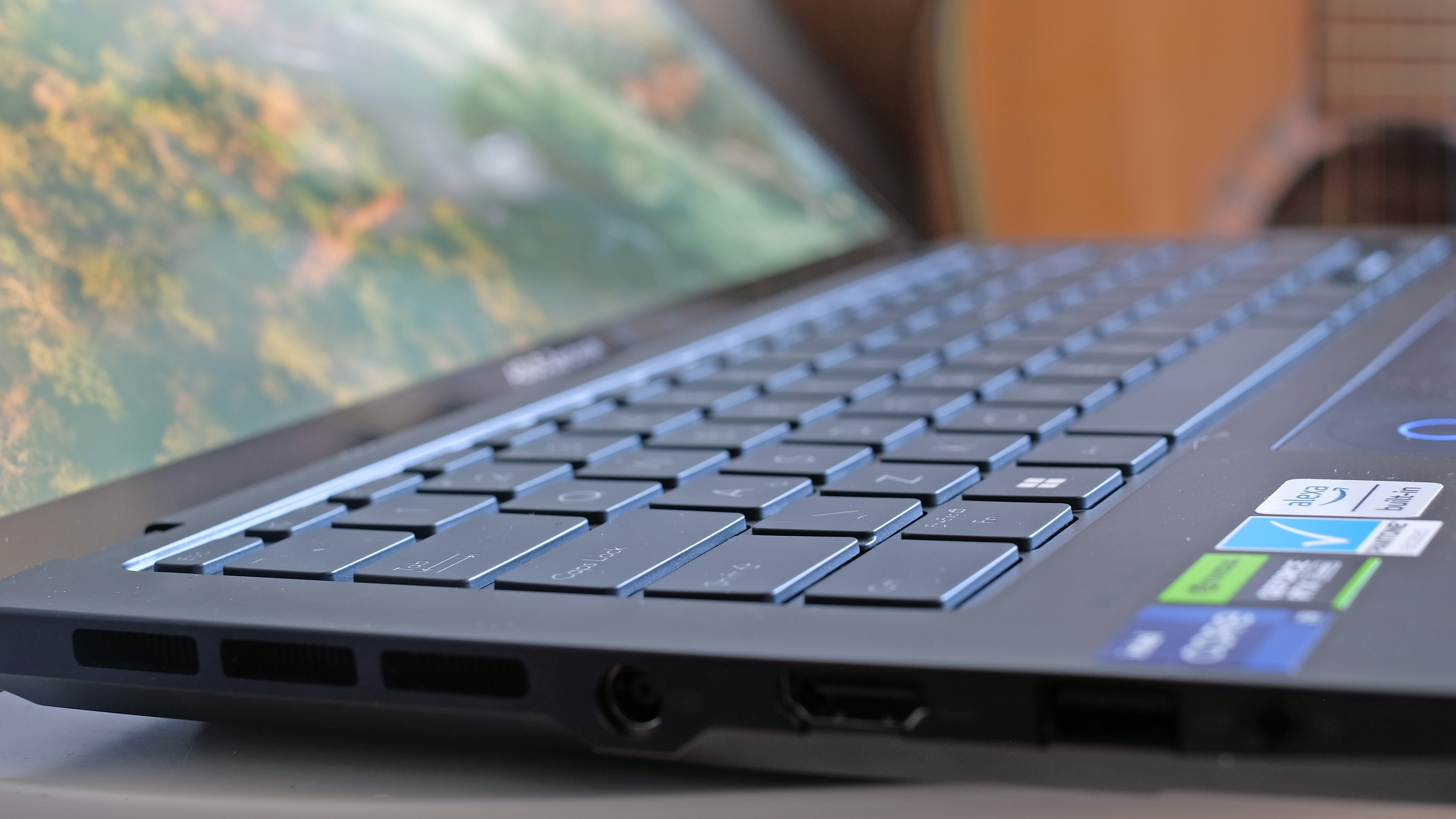
The other of these tells is found in the touchpad. In the top-left corner an indent shows where the DialPad part sits. This is a virtual rotary controller. Nothing actually moves here. The touchpad is a single piece of smooth, textured glass. However, when you flick from the other corner, a little ring lights up inside the DialPad to tell you it’s active.
This can do things like alter the volume, act as a scroll wheel, or alter parameters in pro-grade apps like Photoshop and Premiere Pro. An app that lets you choose what it does, per app, comes pre-installed.
It’s no replacement for a control surface like the Loupedeck+. But it might be our favourite of Asus’ experiments with the touchpad, which include building in a light-up NUM Pad or fitting a full screen below the surface. Asus loved playing the laptop mad scientist, best shown off in this PC’s out-there cousin, the Asus Zenbook Pro Duo.
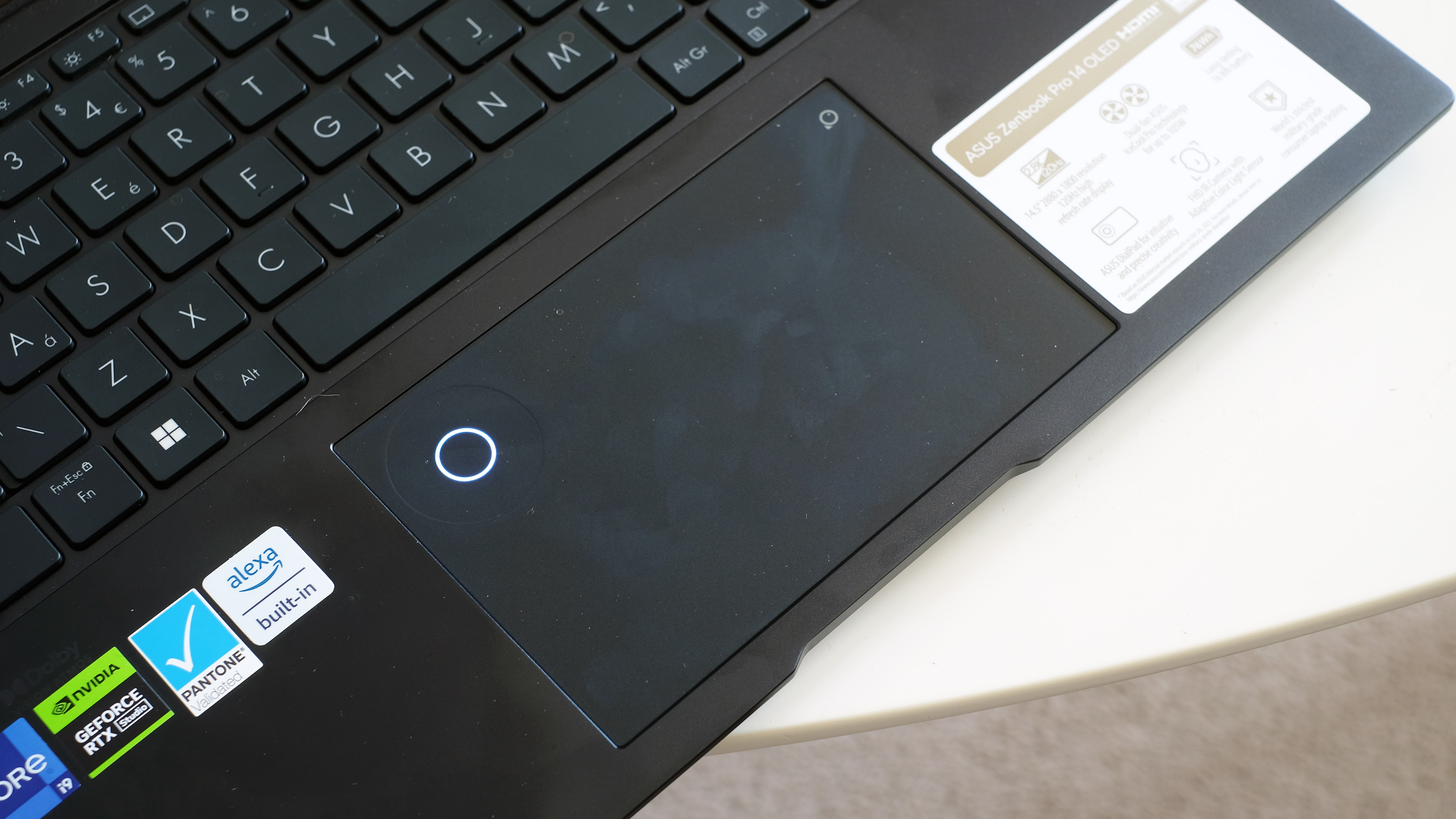
It also helps that the pad itself is of great quality, and feels the part when used as a normal one. It’s smooth and uses a classic mechanical clicker rather than the generally less substantial haptic kind that is now trendy. This is a deeper, darker and mellow pad than the norm, but it does not end up being hard to press quickly as a result.
There’s some of this “out of step” character to the keyboard too. The Asus Zenbook Pro 14 OLED’s keyboard is substantial, with good 1.4mm travel according to Asus’s own specs.
Once again, it has a more dark-and-mellow character rather than the brighter clicky-feeling mainstream portable laptops often lean towards. Typing on this thing is a real pleasure, more so than the Samsung Galaxy Book Ultra I used recently.
Asus seems to have wanted to stick to what were once considered the staples of a laptop for work. And given that’s just what the Asus Zenbook Pro 14 OLED is, that was a a sensible route.
Its keyboard also has a 3-stage white backlight. There’s no RGB goodness going on here. And that's just fine.
Asus Zenbook Pro 14 OLED review: Performance
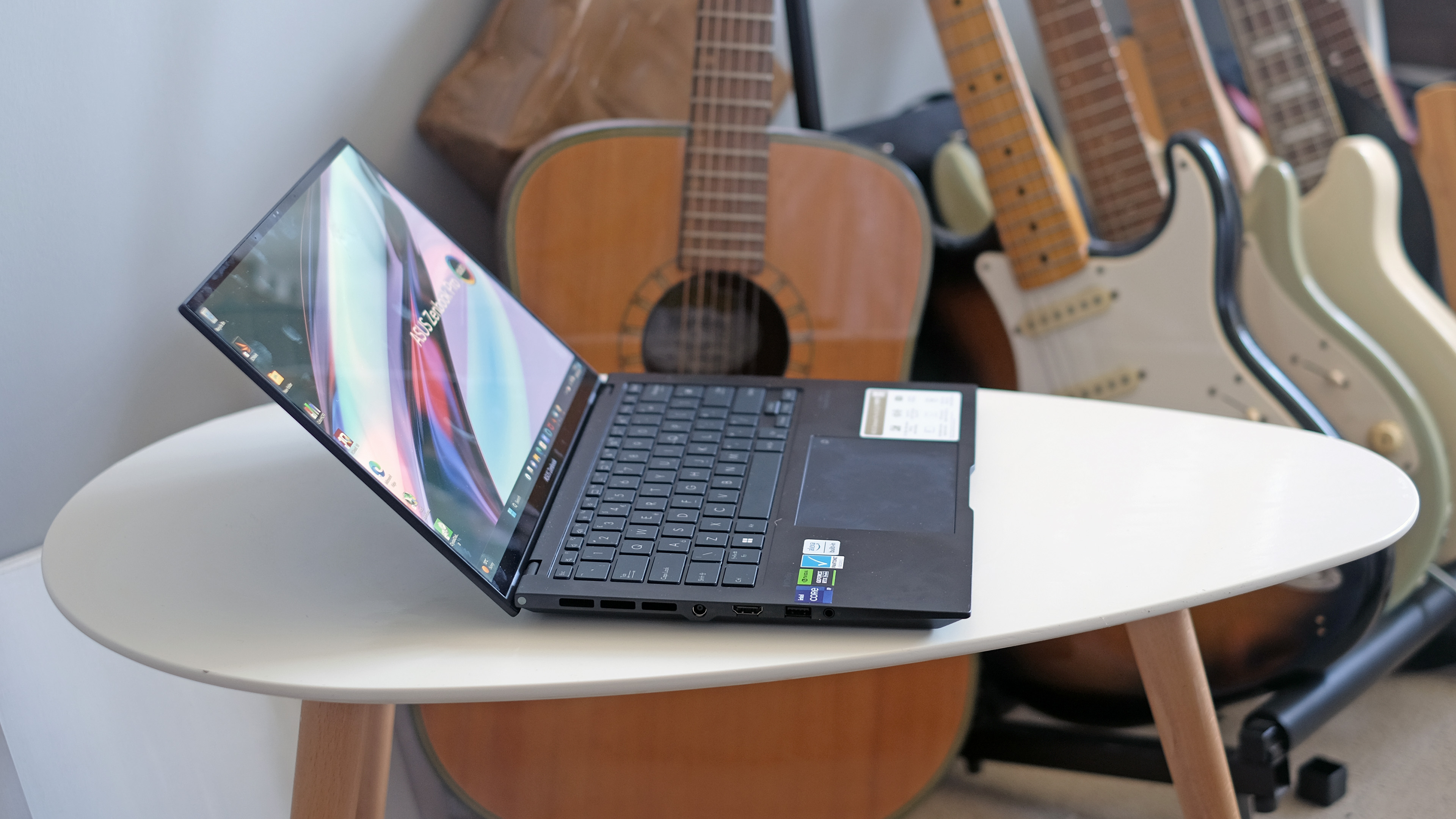
One of the delights of this latest generation of laptop hardware is the increased performance that is viable when dealing with a pretty space-limited setup. The Asus Zenbook Pro 14 OLED has both a performance-driven CPU, the Intel Core i9-13900H, and the most powerful graphics card that could feasibly fit in this shell, the Nvidia RTX 4070. There is a slightly lower-power model with an RTX 4060, but we’re seeing what this series can really do here. It also has 32GB RAM and a 2TB SSD.
This is going to be an ideal rig for video editors and 3D artists who want to be able to take some serious power out on the road with them. And we’re looking at about a 10-20% graphics boost over a good laptop with a last-generation Nvidia RTX 3070 graphics card.
Of course, the Asus Zenbook Pro 14 OLED’s moderately slim and portable build doesn’t come without a sacrifice or two. We found, yep, two. The RTX 4070 here doesn’t reach the 115W power peaks this series is designed to hit. This is entirely normal for a slimmer gaming laptop, and means you will see slightly better performance from a fatter PC with the same graphics card.
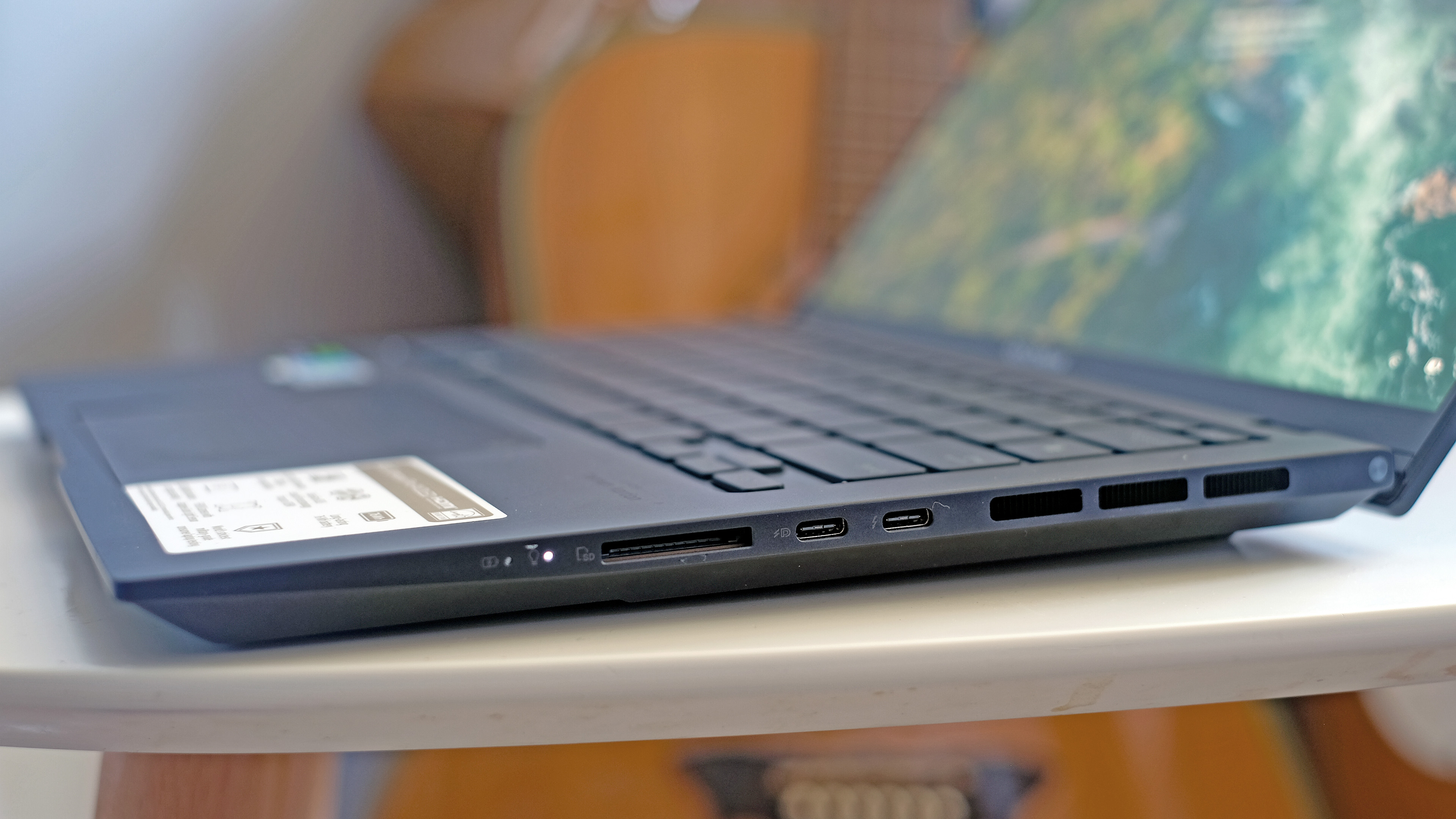
Based on our testing, flicking every dial to get the most juice running through the PC, the Asus Zenbook Pro 14 OLED can draw 90W sustained power for the GPU, from a 115W standard maximum.
This also means the Asus Zenbook Pro 14 OLED makes a pretty great gaming PC, even if it wouldn’t necessarily be our top pick for pure gaming. That’s what the Asus ROG series is for.
A surprisingly punchy set of speakers helps too. Staid work PCs and gaming laptops rarely sound good, but the Asus Zenbook Pro 14 OLED can fling out some actual lower-frequency sound, at quite a volume too. I guess we have to thank the “designer” angle Asus adopted for this one yet again.
There is one little issue, though – and it's the second of those design-related compromises I mentioned. The Asus Zenbook Pro 14 OLED’s fans seem effective, shifting a decent amount of air with little space with which to work, but there is a high-pitch part to the sound that is liable to get on some nerves. A good 85% is the lower-end whoosh – exactly what we want to hear. But that more trebly element is much less easy to ignore, especially when the fans change speeds.
Asus Zenbook Pro 14 OLED review: Battery life
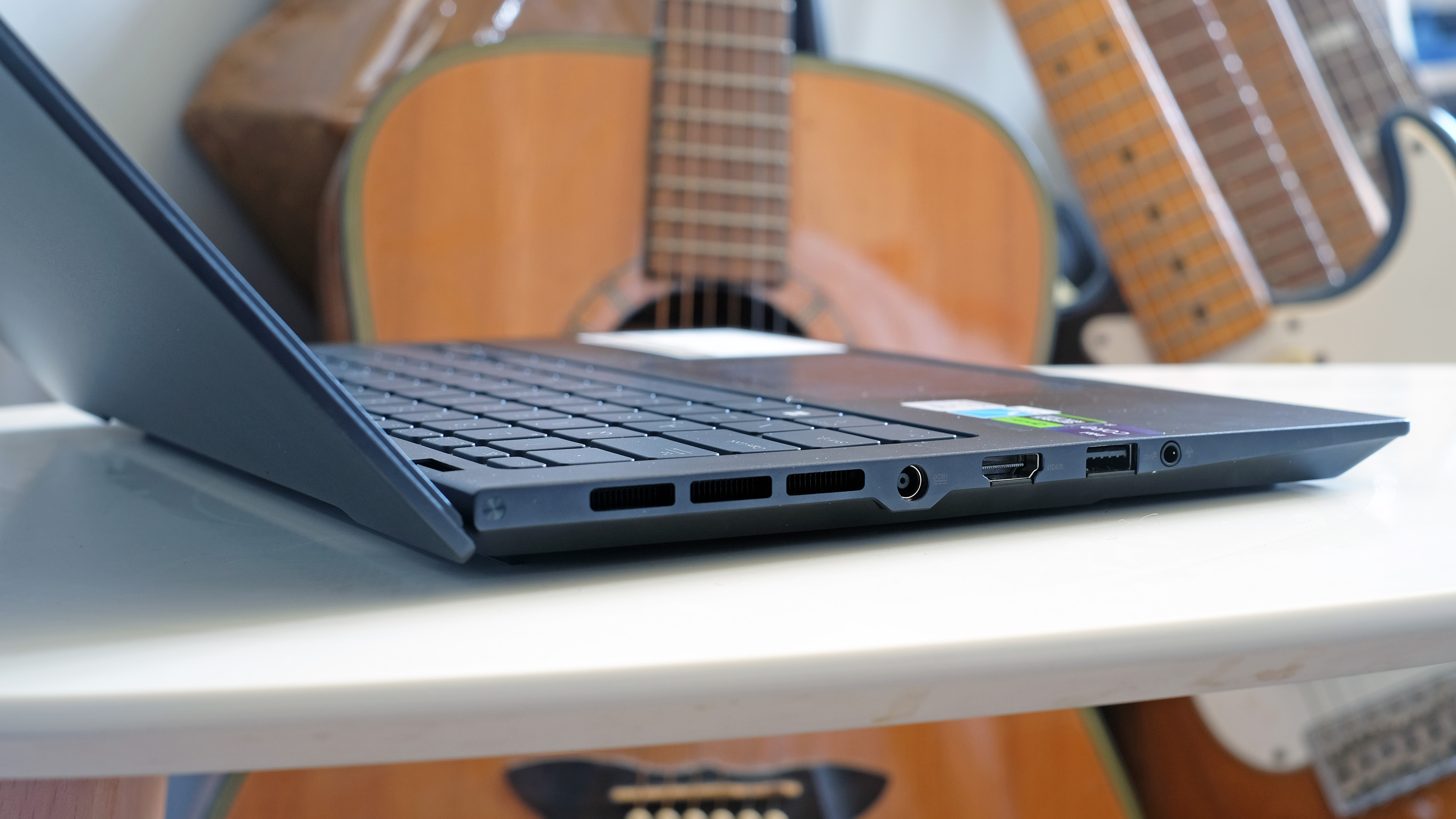
The Asus Zenbook Pro 14 OLED has a larger battery than most 14-inch laptops. It’s of an even higher capacity than the famously long-lasting MacBook Pro 14’s, by almost 10%.
But let’s get real. This laptop was never going to outlast a MacBook, especially not with a Core i9 processor made to deliver great performance over long battery life.
However, we did find the Asus Zenbook Pro 14 OLED just scrapes into the “all day use” category. It lasted almost dead on eight hours in both a rundown test, and when using the laptop to write articles with a little web research on the side.
Under heavier loads the Asus Zenbook Pro 14 OLED isn’t going to last anywhere near as long as a MacBook. But that applies to any Windows laptop.
Finishing up with the periphery features, the Asus Zenbook Pro 14 OLED does not have quite as many connections as your average workstation or gaming laptop. But there’s a greatest hits smattering of ports. We get an HDMI specced to the 2.1 standard, a super-fast SD Card reader, a Thunderbolt 4 and a second slower USB-C with DisplayPort. Plus a good old “fat” USB-A for good measure.
You’ll want to use the chunky 200W power supply when at home. It uses a classic cylindrical connector. But if that’s too heavy, you can plug in a phone adapter that supports USB-C power delivery instead. Bonus portability points.
Don’t expect too much from the webcam, though. While it’s a 1080p camera, not the 720p standard of the last generation, we found the image quality to be just okay. It does have an IR element to aid Windows 11’s face unlock feature, though.
Asus Zenbook Pro 14 OLED review: Verdict
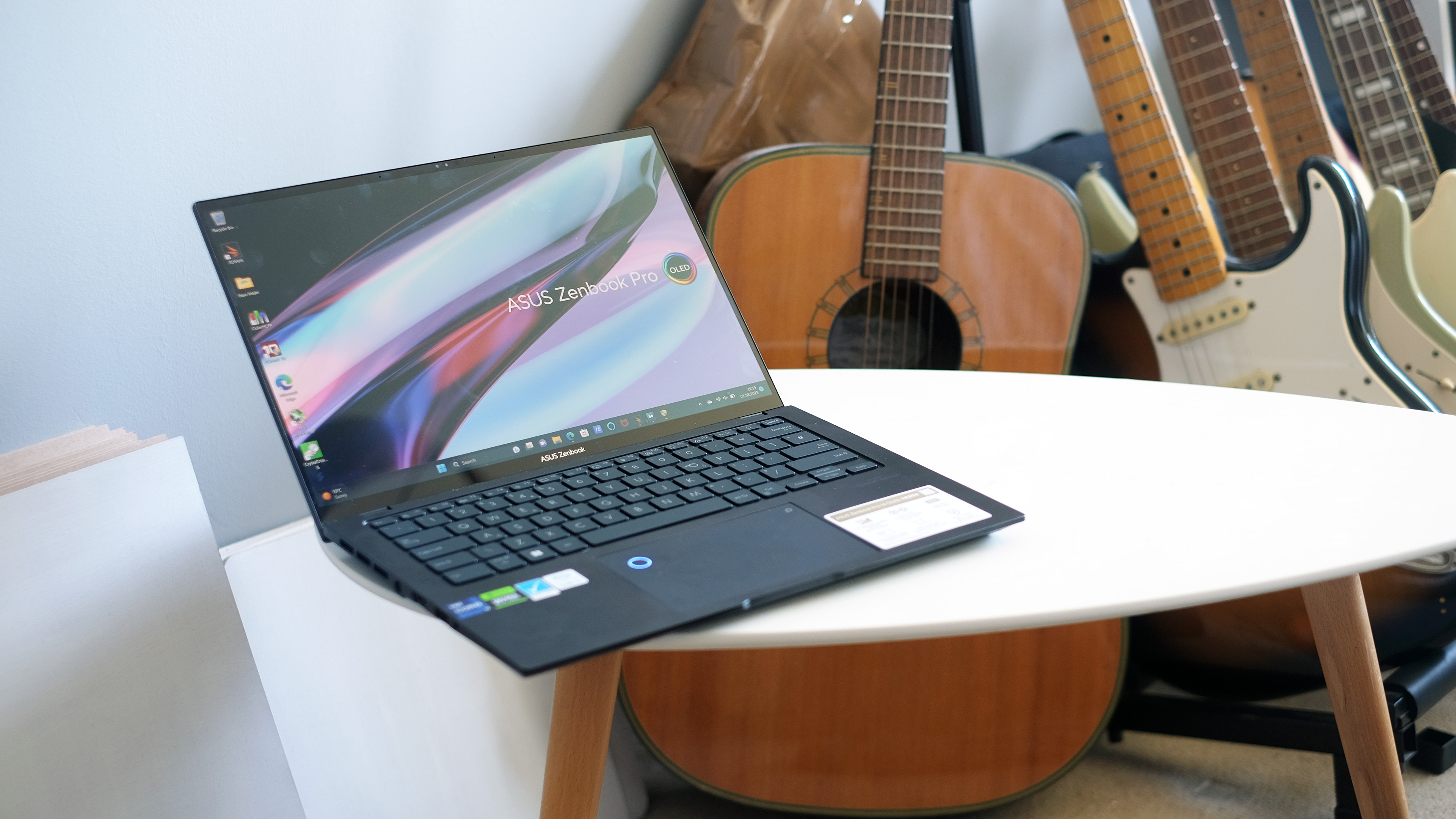
The Asus Zenbook Pro 14 OLED is more dynamic than you might assume following a quick glance at its exterior.
More than just a laptop only just slim and light enough to be considered for all-day portable use, the Asus Zenbook Pro 14 OLED is an extremely powerful PC with handy features for creative types. There’s stylus support, despite the lack of a 360-degree screen hinge that would make this a hybrid. And, more unusual, this laptop has an Asus DialPad built into the touchpad, which emulates a rotary controller.
What makes the Asus Zenbook Pro 10 OLED a bit special, though, is all this married with good speakers, a substantial keyboard, and top-quality trackpad. It may cost a lot, but you get a good serving of… just about everything you could ever want for the entry price.
Also consider
For a similar concept with a more eye-catching look, check out the Asus Zephyrus G14. It’s powerful, but isn’t made for designer types so does not have a touchscreen.
To go even further down that designer avenue, consider the Microsoft Surface Laptop Studio. It has a dual-hinged screen to let you pull the bottom out for a draughtsman’s like angle. However, it’s not nearly as powerful as the Asus Zenbook even in its top spec, and uses much older hardware.
Apple’s MacBook Pro 14 is also a good shout for pro-grade apps, particularly for its ability to run off its battery while still delivering great performance and battery life. Of course, it doesn’t have the DialPad, touchscreen or stylus support.
Sign up to the T3 newsletter for smarter living straight to your inbox
Get all the latest news, reviews, deals and buying guides on gorgeous tech, home and active products from the T3 experts

Andrew is a freelance tech and entertainment journalist. He writes for T3, Wired, Forbes, The Guardian, The Standard, TrustedReviews and Shortlist, among others.
Laptop and computing content is his specialism at T3, but he also regularly covers fitness tech, audio and mobile devices.
He began writing about tech full time in 2008, back when the Nintendo Wii was riding high and smartphones were still new.
-
 Leaked AirPods prototype looks like Nothing... literally
Leaked AirPods prototype looks like Nothing... literallyAnd we are here for them
By Britta O'Boyle Published
-
 OnePlus Watch 3 lands in the UK with a flurry of freebies and a huge discount
OnePlus Watch 3 lands in the UK with a flurry of freebies and a huge discountThe new titanium-clad smartwatch brings 120-hour battery life, ECG health checks, and some serious launch offers
By Matt Kollat Published
-
 Future YouTube feature could put an end to your doomscrolling
Future YouTube feature could put an end to your doomscrollingAnd that's something we would love to see
By Britta O'Boyle Published